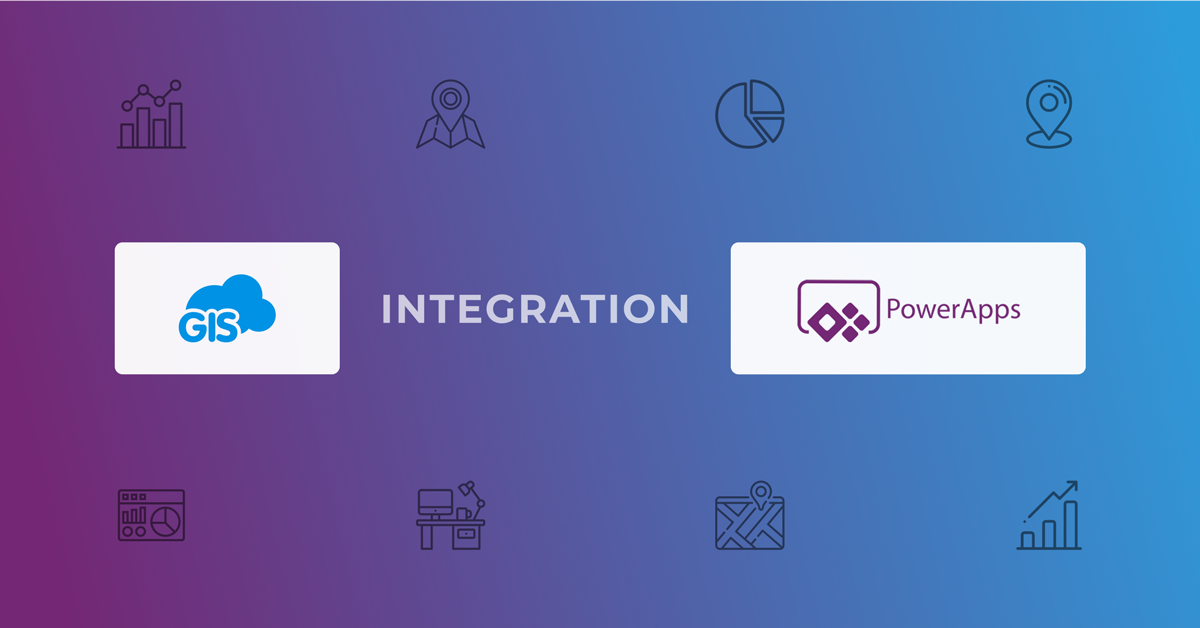Written by: Dr. Jonathan Stanger – PhD (Mech. Eng.), BSc (Phys., Chem.), Spatial Partners

It is a general rule of life that you cannot perfectly satisfy everyone at the same time; this being particularly true for software products. The popularity and sizable subscription base for the PowerApps platform show that Microsoft products have struck a good balance, but some of us just need one extra feature to make it work for our business. This is why Spatial Partners began work on integration between GIS Cloud and Microsoft PowerPlatform to finally introduce that spatial component in Power Apps environments.
The PowerPlatform has steadily grown from a collection of products associated with Office 365 into a complete platform that aims to fill the gap between out-of-the-box solutions (i.e., Dynamics 365 or Teams) and fully bespoke software. Any business currently using an Office 365 tenancy has access to the basics of the PowerPlatform offerings, which includes PowerBI for dashboards, PowerApps for low-code multi-platform application design, PowerAutomate for process automation, and Dataverse to store application data. Each of these includes the ability to extend with 3rd party code to add functionality that Microsoft doesn’t offer. One key lacking area we identified was GIS functionality. The flexibility of the GIS Cloud platform made it a perfect candidate to integrate and bring GIS into Microsoft and custom code into GIS Cloud.
Check out this webinar recording on what you can create with GIS Cloud PowerPlus components and see what exact functionality you can now get in your PowerApp application.
Spatial Partners has developed a series of custom components using Microsoft’s official framework to natively embed a GIS Cloud map within a PowerApps Canvas app to provide a drop in form using the MDC form and to provide a Custom Connector to perform GIS Cloud REST API actions in Canvas apps or PowerAutomate without writing code or dealing with cloud hosting. This has been packaged together as the GIS Cloud PowerPlus solution.
Those familiar with PowerApps would be aware that there are existing map components. But these are statically rendered single tiles, whereas with GIS Cloud PowerPlus, the world-leading map rendering technology of GIS Cloud maps is embedded, providing users with a smooth zoom and pan experience, the ability to render 70,000+ features on an iPad, selectable features, togglable layers styled in GIS Cloud, snap to GPS location or selected feature and capturing of point, line or polygon geometry for new features. The GIS Cloud map component allows any low-code PowerApps app to become a feature-rich GIS-enabled application.
Some ways the GIS Cloud PowerPlus components can be used is to create:
- a dashboard derived from the current features in GIS Cloud
- nightly automation that updates a field GIS Cloud based on a calculation (i.e., days since the last inspection)
- on-demand automation that exports a report from features in GIS Cloud to a SharePoint folder
- a mobile app that enforces filling out one MDC form once per day before filling out other MDC forms (i.e., a daily health and safety report before starting inspections)
- a mobile app with form fields that auto-populate based on a formula (i.e., a total risk formula based on other form answers)
- a mixed mobile and desktop app that allows a single form to submit files to SharePoint and attributes with a captured geometry to GIS Cloud
- an app that uses soft foreign keys to capture form results that include child records all stored in GIS Cloud
- a simple map application embedded in Teams
Our solution has been successfully trialed in 3 use cases so far:
- a tree inspection application that captures two different kinds of form with one having 1:N identified risk evaluations
- a site management application that captures completed land surveys in GIS Cloud and uploads file artifacts to SharePoint
- and lastly, a much simpler case where features are published to GIS Cloud on-demand from an existing workforce management application in PowerPlatform.
In the first case, the nature of the forms required for the tree inspections could not be managed using the MDC application as regulations required individually capturing an unknown number of risk evaluations which in turn required three different risk parameters to be collected that derives a total risk-based on two lookup tables.
In the second case, an existing document management process lacked a spatial element to help with back office to field communication and needed the ability to submit proprietary format files as part of the data collection process.
The last case had an existing bespoke workforce management application within Office 365 that retrieved work orders from a remote API and managed their lifecycle, which needed a field application to collect work progress.
In all cases, leveraging the GIS Cloud PowerPlus solution made it possible to meet client needs without any additional infrastructure to manage with user and license management being done within the Office 365 and GIS Cloud SaaS interfaces. This makes it ideal for small to medium-sized businesses that cannot afford larger investments or additional ongoing IT overhead to manage additional infrastructure.






